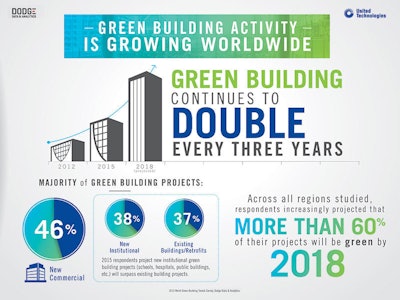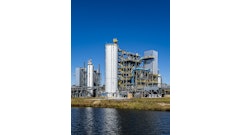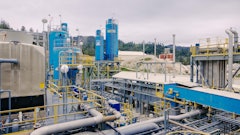
A World Green Building Trends 2016 report by Dodge Data & Analytics, with funding from United Technologies, was announced by Bob McDonough, President, UTC Climate, Controls & Security at the 2015 Greenbuild International Summit in Washington, D.C.
The findings, which will be fully available in early 2016, reaffirm 2008 and 2012 research that green building is doubling every three years and introduce new trends, the latest drivers and barriers for green building:
Green Building Trends
- Across all regions studied, respondents increasingly projected that more than 60 percent of their projects would be green projects by 2018, with a doubling from current projects across the Middle East, North Africa, Asia, South America and Sub-Saharan Africa.
- The largest percentage of green building activity continues to be in the commercial building segment, comprising 46 percent of respondents' future green building projects.
- Activity in institutional buildings – schools, hospitals and public buildings – is expected to surpass green building projects in existing buildings (38 and 37 percent respectively) by 2018.
Green Building Drivers
- Forty percent of respondents noted client demands as a driver for green building activity, followed by environmental regulations (35 percent). Both categories increased over 2008 and 2012 responses.
- An enhanced awareness of the occupant and tenant benefits of green buildings emerged in the 2016 report, with healthier neighborhoods (15 percent), higher return on investment (11 percent) and employee recruitment (5 percent) increasing as drivers.
- Regarding social motivators, respondents ranked encouraging sustainable business practices as the most important benefit of green building (68 percent), followed by its ability to support the domestic economy, create a sense of community and increase worker productivity (all 50 percent or higher).
- From an environmental perspective, reducing energy consumption (84 percent) and reducing water consumption (76 percent) topped the list as important.
See full story from PR Newswire here.


















